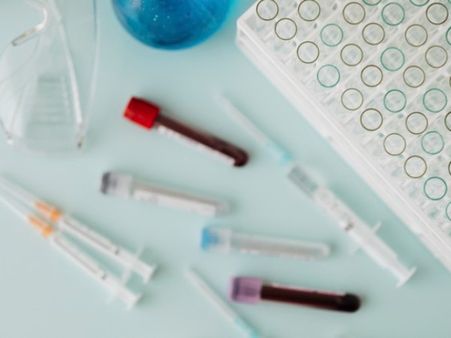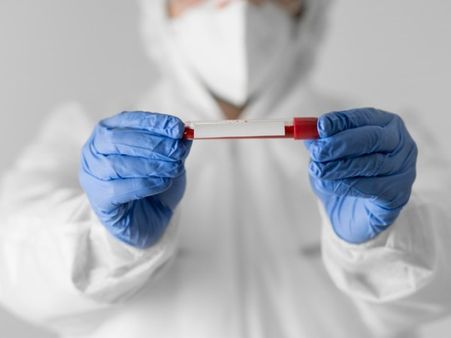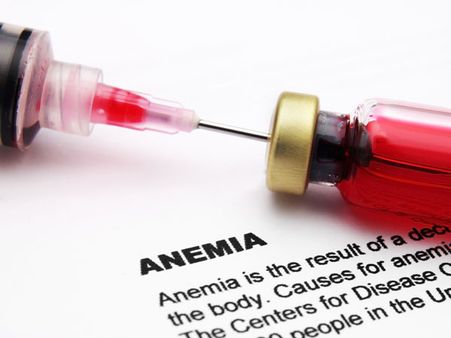Just In
- 31 min ago

- 1 hr ago

- 9 hrs ago

- 18 hrs ago

Don't Miss
- Finance
 Swing Trading Guide: 3 Stock Picks By VLA Ambala On Thursday, 25th April
Swing Trading Guide: 3 Stock Picks By VLA Ambala On Thursday, 25th April - Sports
 SRH vs RCB IPL 2024: Three Players RCB Must Play Today against Hyderabad
SRH vs RCB IPL 2024: Three Players RCB Must Play Today against Hyderabad - Education
 JEE Main Result 2024 Out, Telangana's 15 Toppers Shine, Check Statewise List of 56 Candidates with Perfect 100
JEE Main Result 2024 Out, Telangana's 15 Toppers Shine, Check Statewise List of 56 Candidates with Perfect 100 - News
 Mangalsutra Row: Did Indira Gandhi Donate Gold During The 1962 War? The Facts Behind Priyanka's Claim
Mangalsutra Row: Did Indira Gandhi Donate Gold During The 1962 War? The Facts Behind Priyanka's Claim - Movies
 Kota Factory 3 OTT Release Date, Platform: When Will Jitendra Kumar's Web Series Premiere On Netflix?
Kota Factory 3 OTT Release Date, Platform: When Will Jitendra Kumar's Web Series Premiere On Netflix? - Travel
 Escape to Kalimpong, Gangtok, and Darjeeling with IRCTC's Tour Package; Check Itinerary
Escape to Kalimpong, Gangtok, and Darjeeling with IRCTC's Tour Package; Check Itinerary - Technology
 OPPO Find X7 Ultra Camera Deep-Dive: Pushing the Boundaries of Photography on a Smartphone
OPPO Find X7 Ultra Camera Deep-Dive: Pushing the Boundaries of Photography on a Smartphone - Automobiles
 Aston Martin Vantage Launched In India At Rs 3.99 Crore
Aston Martin Vantage Launched In India At Rs 3.99 Crore
Female Anaemia Risk Indicator Tool To Help Indian Women Beat Anaemia
Anaemia is a critical health concern in India, affecting over 50 per cent women. Usually, haemoglobin less than 12 gm/dL is considered as anaemia, and women are at a higher risk for developing anaemia. Several reasons contribute to anaemia: poor nutrition, worm infections, heavy and abnormal menstruation, and pregnancy where there is a higher need for haemoglobin in the blood.


The is complicated by a considerable lack of awareness about anaemia in India. Therefore, to address this issue at a greater level, Bollywood actress and author Twinkle Khanna inaugurated the Female Anaemia Risk Indicator (FARI) on Iron Deficiency Day (26 November 2020). This tool will help women to know if they are at risk of anaemia. They may need to visit a medical practitioner for further advice.

What Is Anaemia?
Anaemia is a condition that occurs when your body does not have enough healthy red blood cells or haemoglobin [1]. Anaemia is of different types, such as aplastic anaemia, iron deficiency anaemia, sickle cell anaemia, thalassemia, and vitamin deficiency anaemia [2].
Symptoms of anaemia
The signs of this condition vary depending on the cause, and in some cases, you may not have any symptoms [3]. The common symptoms of anaemia are fatigue, weakness, pale or yellowish skin, irregular heartbeats, shortness of breath, dizziness, chest pain, cold hands and feet and headaches [4]. In most cases, the symptoms of anaemia are not noticeable and can worsen as the condition worsens [5].
Causes of anaemia
Iron deficiency is the most common cause of anaemia [6]. The other causes are when your body does not make enough red blood cells, bleeding causes you to lose red blood cells more quickly than they can be replaced and your body destroys red blood cells (auto-immune condition) [7].

Types Of Anaemia
- Iron deficiency anaemia: This type is caused by a shortage of iron in your body.
- Vitamin deficiency anaemia: A diet lacking in folate and vitamin B-12 and other key nutrients can cause decreased red blood cell production, resulting in this type of anaemia [8].
- Aplastic anaemia: In most cases, the condition develops because of idiopathic reasons, i.e. unknown reasons. According to studies, it has been ascertained that aplastic anaemia is caused when the immune system mistakenly targets the bone marrow.
- Sickle cell anaemia:This type can be inherited and can be severe in some cases and is caused by a defective form of haemoglobin that forces red blood cells to assume an abnormal crescent shape.
- Haemolytic anaemias: This type of anaemias develops when red blood cells are destroyed faster than bone marrow can replace them.
Risk factors for anaemia
Menstruation, intestinal disorders, pregnancy, a diet lacking in iron, vitamin B-12 and folate, chronic conditions (cancer, kidney failure, diabetes), family history and other factors such as certain infections, blood diseases and autoimmune disorders increases your risk of anaemia [9].
Complications of anaemia
If not treated on time, anaemia can result in severe fatigue, pregnancy complications, heart problems and even death [10].

Can Anaemia Be Prevented?
Most types of anaemia cannot be prevented; however, iron deficiency anaemia and vitamin deficiency anaemias can be avoided by following a diet encompassed of a variety of vitamins and minerals [11]. Including the following in your diet can help prevent the onset of the afore-mentioned anaemias.
- Iron-rich foods such as beans, lentils, dark green leafy vegetables, and dried fruit. Beef and other meats are also rich in iron.
- Folate-rich foods such as dark green leafy vegetables, green peas, kidney beans, peanuts etc.
- Vitamin C foods such as citrus fruits and juices, peppers, broccoli, tomatoes, melons, and strawberries.
- Vitamin B12 foods such as meat, dairy products, and fortified cereal and soy products [12].

How Is Anaemia Treated?
The treatment varies depending on the cause. Anaemia caused by iron deficiency is treated by taking iron supplements and changing your diet [13]. Treatment for folic acid and vitamin C deficiency involves dietary supplements and increasing these nutrients in your diet.

Anaemia of chronic disease does not have a specific treatment, for aplastic anaemia, the treatment includes blood transfusions to boost levels of red blood cells.
Anaemias associated with bone marrow disease is treated through include medication, chemotherapy, or bone marrow transplantation [14]. For haemolytic anaemias, the treatment includes avoiding suspect medications, treating infections, and taking drugs that suppress your immune system, which could be attacking your red blood cells.

Anaemia And Indian Women
Prevalence of anaemia is higher in India as compared to other developing countries [15]. And the numbers show that women are more affected than men. It is estimated that about 20-40 per cent of maternal deaths in India are due to anaemia and one in every two Indian women suffers from some form of anaemia [16].
According to surveys, India has the highest number of cases of anaemia in the world, citing reasons such as the high cost of healthcare facilities, poor food quality and the low status of women. Anaemia remains to be a major cause of maternal mortality and low birth weight in India. According to WHO, if the prevalence of anaemia at community levels is more than 40 per cent, it is considered as a problem of high magnitude, which is the condition is most states in India [17].
The reality of the situation points at the urgent need for improving the overall nutritional status of adolescents through nutrition education, community awareness and supplementation programmes.

On A Final Note…
Women's health has always taken a backseat because of the different roles they play and the biggest responsibility of becoming a mother that only they can shoulder. Now, it is imperative for them to empower themselves with the right knowledge and take the right actions.
-
 disorders cureDid You Know About These 15 Serious Side Effects Of Chemotherapy
disorders cureDid You Know About These 15 Serious Side Effects Of Chemotherapy -
 nutritionFrom Curing Diabetes To Detox, Here Are 15 Medicinal Benefits Of Jackfruit
nutritionFrom Curing Diabetes To Detox, Here Are 15 Medicinal Benefits Of Jackfruit -
 nutritionWorld Blood Donor Day 2018: Benefits Of Spinach, Banana, And Date Smoothie For Boosting Iron
nutritionWorld Blood Donor Day 2018: Benefits Of Spinach, Banana, And Date Smoothie For Boosting Iron -
 wellness9 Dangerous Symptoms Of Leukemia (Blood Cancer) In Children (International Childhood Cancer Day)
wellness9 Dangerous Symptoms Of Leukemia (Blood Cancer) In Children (International Childhood Cancer Day) -
 wellness10 Signs And Symptoms Of Heart Murmur
wellness10 Signs And Symptoms Of Heart Murmur -
 wellness15 Iron-Rich Foods That You Should Include In Your Diet
wellness15 Iron-Rich Foods That You Should Include In Your Diet -
 disorders cureThis One Natural Ingredient Helps To Treat Anaemia; Read To Know More
disorders cureThis One Natural Ingredient Helps To Treat Anaemia; Read To Know More -
 disorders cureFoods For Anemia
disorders cureFoods For Anemia -
 wellnessWhy Drink Water From Copper Containers?
wellnessWhy Drink Water From Copper Containers? -
 wellnessBeware! Here Are Some Unexpected Hereditary Health Conditions You Might Inherit
wellnessBeware! Here Are Some Unexpected Hereditary Health Conditions You Might Inherit -
 wellnessBeware! These Are The Diseases Of The Blood
wellnessBeware! These Are The Diseases Of The Blood -
 nutritionIs Prune Juice Healthy?
nutritionIs Prune Juice Healthy?


 Click it and Unblock the Notifications
Click it and Unblock the Notifications



